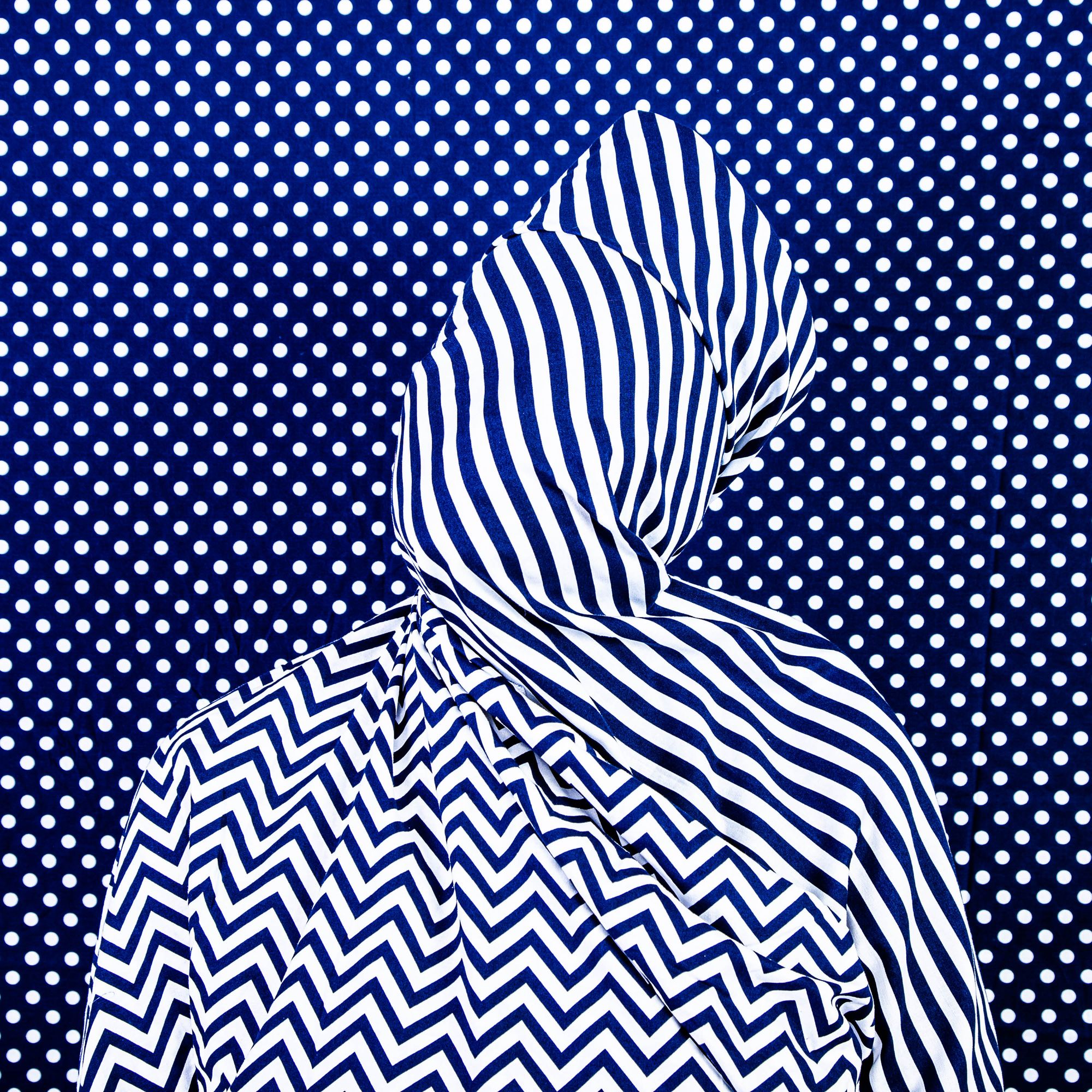INDIGOPhoto Series
2019–202111 Artworks
Stripes, 2021
Reorient (v): “to reacquaint someone, especially oneself, with a situation or environment.”
INDIGO (2019-ongoing) is a photographic series that explores the multiplanar capacities of the dynamic indigo plant, pigment, and array of blues that it renders. It unites us physically and cosmically as our bodies are composed of eighty percent water and our gazes are drawn to the blue sky from birth, connecting us to the earth and to each other. As the sun moves through the sky, and light refracts across the atmosphere, the shifting hues of blue mark the passage of time. It is no surprise then, that the color has been understood throughout history and across different cultures as something that allows us to transcend and connect our physical bodies to the celestial. It is a constant for us all, whether we are settled or in migration, imprisoned or free.
Indigo—a dark blue dye rendered from a tropical plant belonging to the pea family—was once widely cultivated and traded globally. It is now used in textiles and holds cultural significance across the world from Japan, Mexico, Yemen, India, and Senegal to Vietnam, China, and Laos. The production, harvesting practice and usage draw a constellation, mapping various functions of indigo across the individual cultures that produce it. In Japan, for example, indigo (aizome) was traditionally worn by the lower social classes. Japanese farmers wore it to repel snakes, mosquitos, and other pests, while firefighters wore it for its fire-resistant properties. The INDIGO series thus reflects textiles' capacity to divide us, while also revealing the unifying power of the pigment itself and the artisanal process, across cultures and continents.
In Yemen, the indigo process was mastered by Jewish artisans who had ties to the Jewish community in Uzbekistan, likely united through the trade routes of the Silk Road and Mecca, which served as an economic as well as a religious center. In Uzbekistan and Yemen, master weavers in search of indigo hues would take the fibers to Jewish master dyers. Though fragmented through religion, these communities collaborated on the same cloth. Their interwoven relationships transcended the textile to echo across diverse communities in Asia and North Africa. Despite seemingly disparate backgrounds, cultures, and terrain, we are all in fact connected through the historical production and symbolic meaning of textile.
In 2015, I found myself in a near-fatal incident while in the Himalayas. At the moment of fully submitting myself to the circumstance, I closed my eyes only to feel awash in indigo, and then when I reopened them, everything in sight bled indigo. This perpetuated a pronounced sense of reorientation, oscillating from extreme disorientation toward total orientation. In further travels, I would hear from fellow travelers and migrants who’d had similar traumatic experiences, whether in a moment of crisis or extreme pain, felt themselves similarly connected to the wash of indigo. In a variety of cultures, indigo is referenced as the third eye, the Ajna chakra, the brow. It is repeatedly referenced in this state of vertical travel, wherein one finds oneself removed from linear time frames and physical existence––the borderlands between and beyond shifting planes of consciousness.
INDIGO invites the viewer to reorient their relationship and understanding of the potentialities of color. The series posits that color itself can serve as a means to embrace that which cannot be legible through a lexicon, but can only articulate a state of being: the space that exists between.

